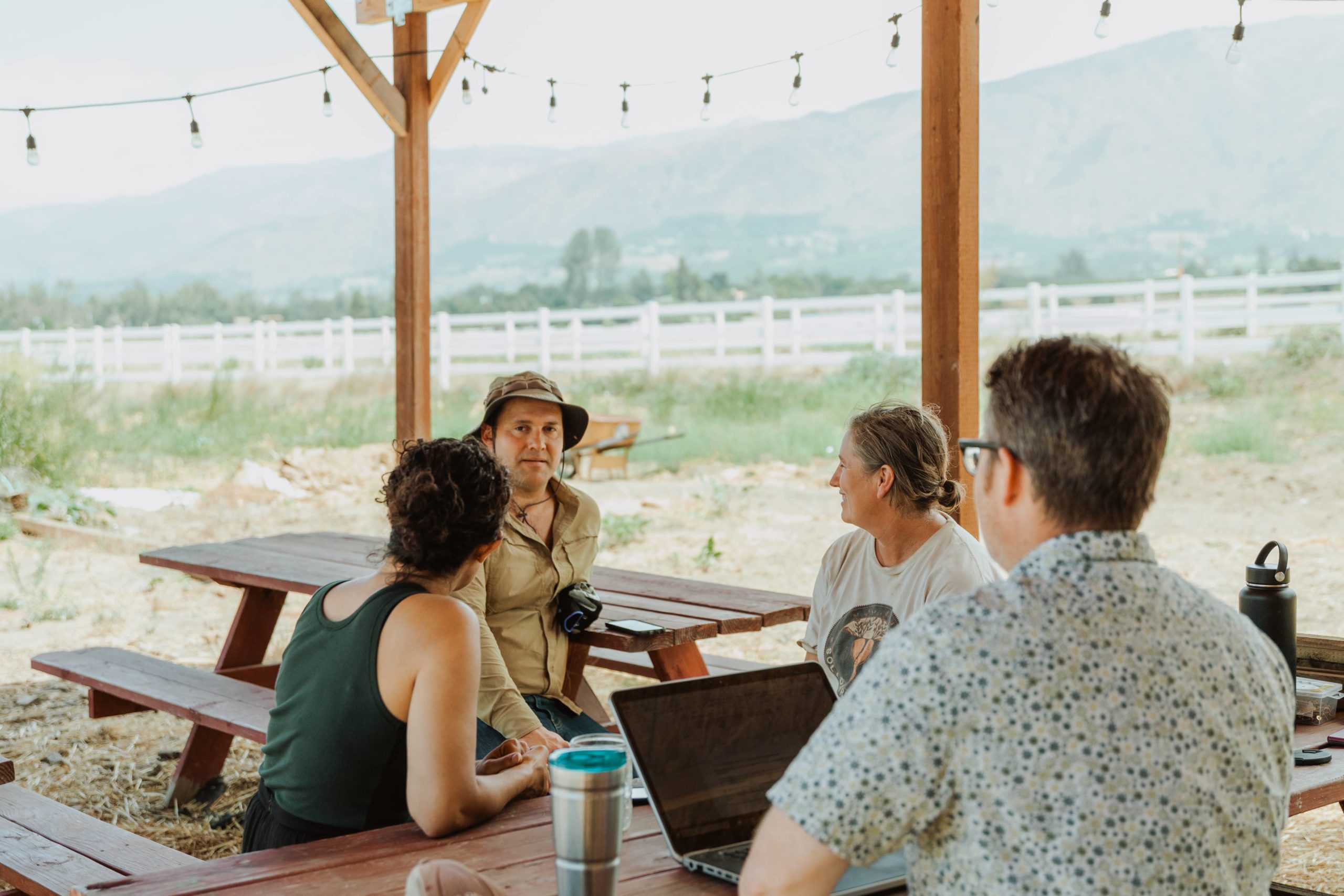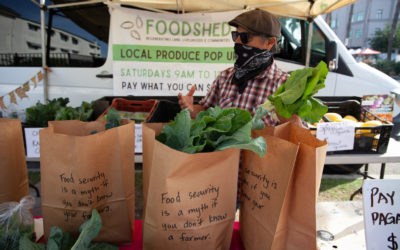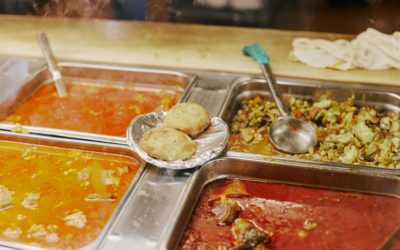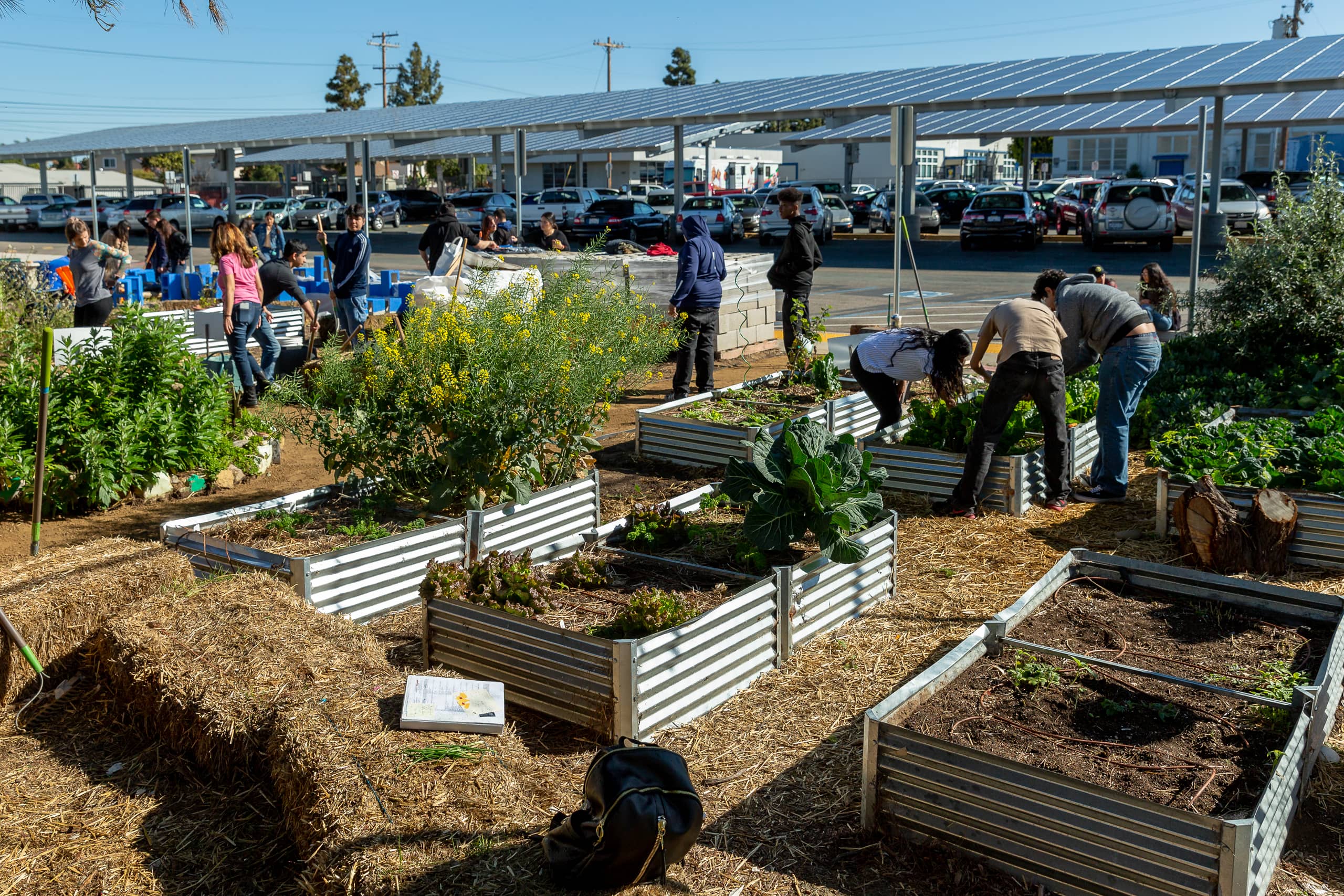Becoming a subscriber to Foodshed’s Fresh 5 program—a weekly distribution of fresh, seasonal produce, grown by the small farmers who make up the Foodshed cooperative—means you’re in for two surprises with every delivery. One is the produce itself: an ever-changing...
Objective 6
Improve Community Food Environments
Introduction
There is a strong relationship between food, health, and place. The built environment around neighborhoods shapes the availability of food and the overall health of residents. Food can be a source of nourishment or a source of sickness. Supermarkets, restaurants, and corner stores are all features of the built environment, and the types and proximities of these businesses define our community food environment and ultimately, our health.
As a social determinant of health, community food environments affect health, well-being, and quality of life, and can create or perpetuate the conditions that contribute to health disparities and inequities.
The increased prevalence of cheap food, large portion sizes, and high calorie ingredients across communities, paired with government policies and lifestyle choices, has led to an epidemic of health and diet-related diseases, including obesity and type 2 diabetes. More people are sick in this country—100 million pre-diabetic or diabetic adults, 122 million adults with cardiovascular disease, 3 in 4 adults overweight or obese—than are healthy.
Poor diet is the leading cause of death in the U.S. and the consumption of specific foods and nutrients are connected to increased deaths due to heart disease, stroke, and type 2 diabetes. In particular, men, Black and Hispanic/Latinx individuals, and people with lower education levels have higher rates of death from unhealthy diets than women, White individuals, and people with higher education levels.
Research has overwhelmingly confirmed that race/ethnicity and lower socioeconomic status are associated with higher rates of diet-related illnesses and deaths. Low income communities and communities of color also have unequal access to quality healthcare, creating compounding challenges. The disproportionate impact of the COVID-19 pandemic on low income communities and Black, Indigenous, and people of color further highlights the disparities and inequities related to health. As an acknowledgement of the rampant inequality that exists today, both the Centers for Disease Control and Prevention and the County of San Diego Board of Supervisors recently declared racism a public health crisis.
Most of us know that diets high in fruits, vegetables, and fiber and low in fat, sodium, and added sugars are good for our health. These foods however, are not as widely available as unhealthy foods, especially across low income communities and communities of color. The social determinants of health—economic stability, education access and quality, health care access and quality, neighborhood and built environment, and social and community context—intersect in these communities, creating unequal access to healthy food, among other inequities. Research from metropolitan regions across the country, including the City of San Diego, has confirmed that residential segregation impacts the availability of healthy food options, resulting in nutritional inequities and diet-related health disparities across urban areas. These trends also affect rural communities and Indigenous communities. Based on a person’s race and zip code, one can generally predict their likelihood to have diabetes, heart disease, or other diet-related diseases.
Communities with limited healthy food options are commonly described as food deserts, where healthy, fresh food options are sparse, food swamps, where there is an overabundance of unhealthy food, or food mirages, where healthy food options are present, but unaffordable or otherwise out of reach. These terms however, fail to acknowledge deeply rooted structural issues that influence community food environments and fail to capture the complexity of the issue. The idea of a food desert paints a picture of a barren landscape, minimizing the role of ethnic markets in providing access to affordable, fresh, healthy, and culturally appropriate foods, overlooking that people may not shop at the closest food retailer, and ignoring all of the ways that people are self-reliant in these communities.
Karen Washington, a community gardener and food justice activist in New York, redefines food deserts more aptly as food apartheid, which takes into consideration the structural issues embedded in our food system. The reason for the lack of healthy food options in these communities is not because people do not want to eat fresh fruits and vegetables, but rather because healthy, nutritious, traditional, and culturally appropriate foods are not available. She highlights that these communities need more than just healthy food options in stores, they need an influx of resources and financial support, along with increased ownership of land and capital, to truly transform conditions and overall health.
Improving community food environments is complex. It will require an intersectional approach that considers race, culture, housing, transportation, and our economy. This work must also center the needs and aspirations of residents and build community power. Acknowledging and preserving the life, traditions, values, and potential of diverse communities and promoting food sovereignty must be the centerpiece of any attempt to improve community food environments.
Improve Community Food Environments
Objective 6
Chapter Summary
Patterns of injustice are visible today in neighborhoods across the country.
As a result of decades of segregation and racist housing policies that have unfairly benefitted White communities, Black, Indigenous, and people of color are now concentrated on reservations and in urban areas with limited resources and opportunities to thrive.
The impacts of redlining have had a particularly lasting effect.
People who were born in previously redlined areas, especially people of color, have lower economic mobility than those who were born in more affluent and less segregated places.
Low income communities, especially communities of color, experience higher rates of food insecurity and diet-related diseases.
Southeastern San Diego shows the highest rates of food insecurity and CalFresh enrollment. The rates of death from diabetes are particularly high in the Central Region, including Central San Diego, Mid-City, and Southeastern San Diego, the East Region, including El Cajon, La Mesa, and Lemon Grove, and the South Region, including Chula Vista and National City.
Access to healthy food is limited across most low income communities and communities of color.
Segregated communities are more likely to have greater concentrations of fast food, convenience stores, and corner grocery stores and less likely to have supermarkets. People living in segregated communities also have to travel longer distances to find healthy food and even when it is available locally, it is often unaffordable.
Efforts to increase healthy food access often undermine the resources and potential that already exists within communities.
Supporting smaller, ethnic, and independently owned stores with financial, marketing, and technical assistance along with community-led initiatives, including gardens, farmers markets, mobile markets, and food hubs, provide much better solutions for addressing disparities and meeting community needs than the addition of supermarkets and large grocery stores.
Gentrification is an unintended consequence of efforts to improve community food environments in urban areas.
The share of gentrified neighborhoods in San Diego County increased by 18% from 1990 to 2015, including neighborhoods in Southeastern San Diego, City Heights, Logan Heights, and Oceanside.






